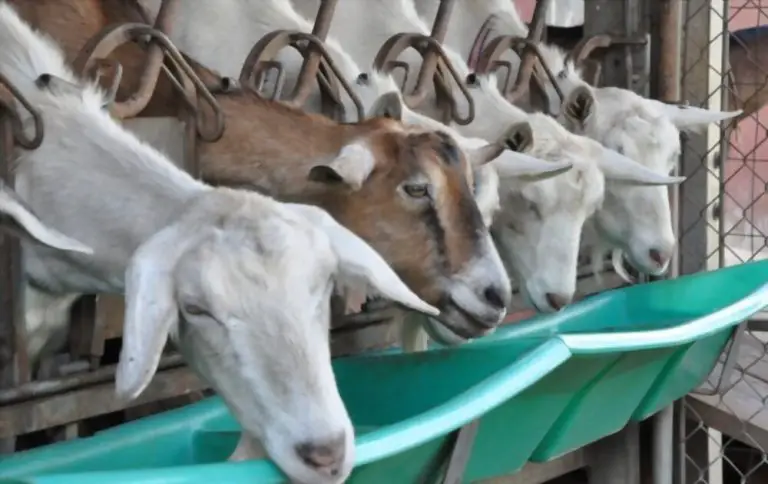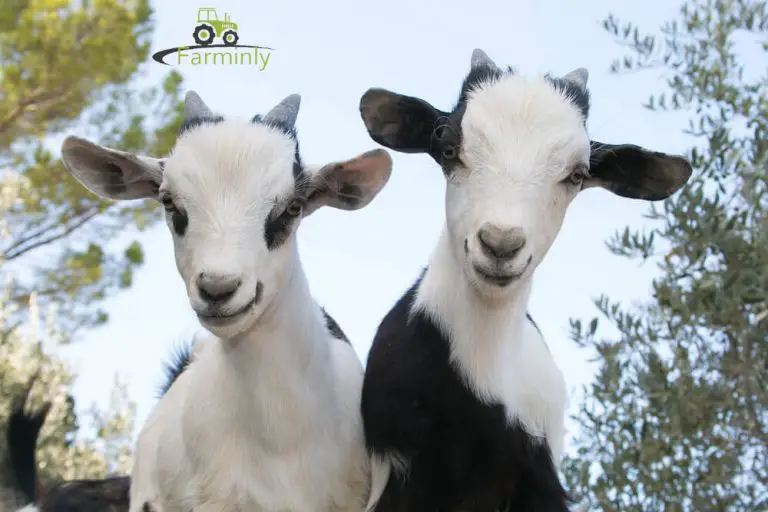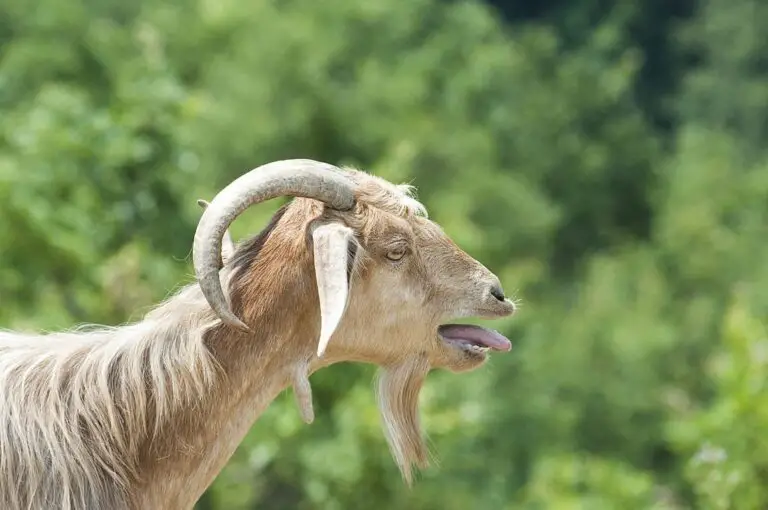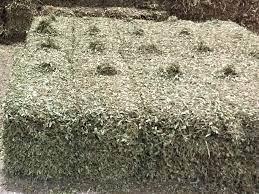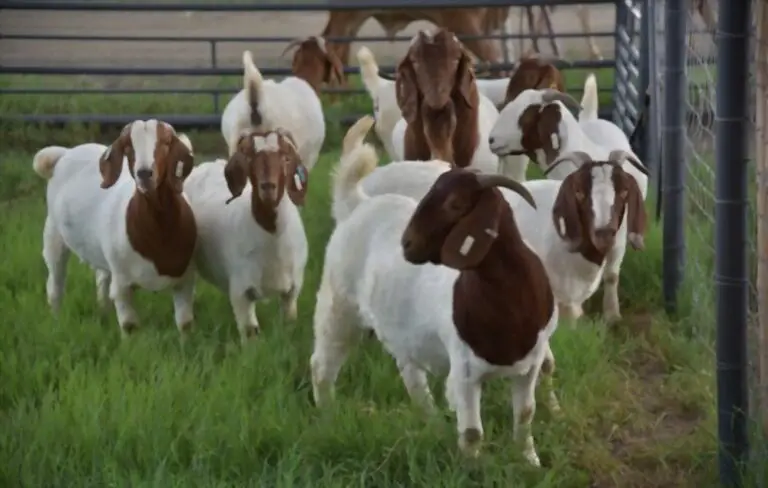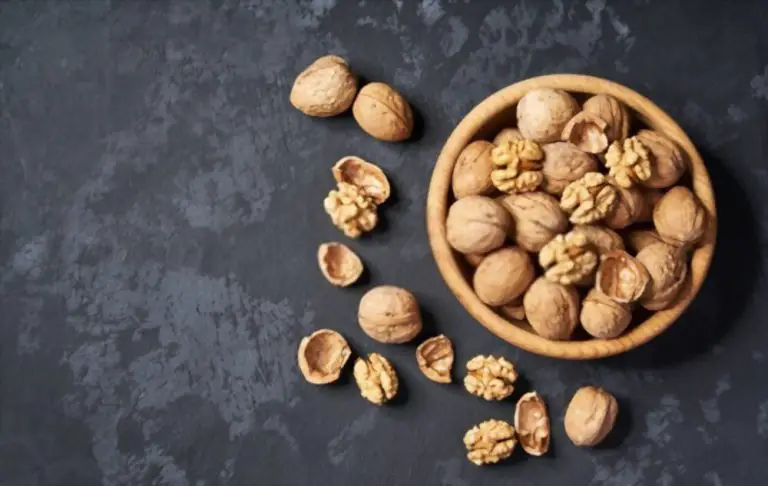Gulabi Goat Why Are Ears So Long
Known exclusively for their long eras, Gulabi goats are one unique set of goats. Due to the nature of their ears, the question, “why do gulabi goats have long ears” always popped up.
For this reason, this article was drafted to answer your question and enlighten you on certain fun facts about Gulabi goats you commonly won’t know.
Firstly, let’s look at the nature of the Gulabi goat.
About Gulabi Goats
Gulabi goats also called “Pateri goats,” are common goats mostly found in South Asia, especially in India and Pakistan.

Originally, this unique breed of goats was raised to supply milk and meat. They are mostly white with topped black or brown heads and long wide ears that drop to the side of their head.
Because of their adorable look (as well as their friendly, loving nature, they (Gulabi goats) are widely kept as pets in the U.S.
Breeds of Gulabi Long-Eared Goats
In total, we have four different and unique breeds of Gulabi goats. They are
- Beetal
- Rajhanpuri
- Pateri
- Kamori
The Beetal and Rajhanpuri breeds are said to be more influential in creating the Gulabi goat species, followed by Pateri and Kamori.
So now, let’s look at each of the breeds carefully.
1. Beetal Goat

Beetal goats are very common goats in Pakistan. They usually have bodies that are big and heavy. The male Beetal goat weighs up to 55kg while the female one weighs around 45kg.
In addition, their legs are always long. Beetal goats, thanks to their big and strong body, have an impressive capacity to produce milk.
They can produce about 1.8 to 2.7 liters of milk every day. That’s why this breed is commonly kept all year round. In terms of their ears, Beetal goats have long, wide, drooping ears that are usually multicolored.
2. Rajanpuri Goat

Like the Beetal goat, Rajanpuri also has large, mostly white bodies. Unlike Beetal goats, their skin is pretty loose and often forms wrinkles. They are mostly found in India and Pakistan.
These types of goats don’t have horns, but they have mostly white hooves. Regarding appearance, Gulabi goats look much more like Rajanpuri than Beetal.
Apart from their dual-purpose function (meat and milk), they are also raised for their skin, which is good quality.
3. Pateri Goat

Pateri Goat doesn’t resemble the original Gulabi goats species like the above-discussed two breeds.
The Pateri goats are mostly found in the province of Sindh, Pakistan, where they serve a dual purpose: both a source of meat and milk.
Like Beetal and Rajhanpuri breeds, Pateri goats have big heavy bodies and can produce more than a liter of milk daily. Like the other mentioned breed above, their ears are long and dropping, too.
Regarding weight, adult Pateri goats are about 42kg to 52kg. Additionally, Pateri goats are mostly white, with reddish-brown faces and necks.
4. Kamori Goat

Kamori goat is the last breed that contributed to the origin of the Gulabi goat. They are also found in the province of Sindh, Pakistan.
Kamori goats are usually raised for dual functions, that is, for meat and milk. But due to their large, heavy bodies that enable them to produce enough meat, they are mostly raised for milk. Averagely, they produce about 1.8 to 2.2 liters of milk per day.
Additionally, they don’t have horns like the Pateri goats. Like the other three species, they have drooping ears, too.
Its distinctive appearance makes it stand out among the three. Unlike the above breeds, they have dark brown fur with several small coffee-colored spots all over their body.
Uses of Adult Gulabi goats
- Gulabi goats are raised for both meat and milk. Although, they don’t produce much milk like cows. The milk is usually mainly consumed by the family who keeps it. The maximum amount of milk they can produce daily can be up to 2 to 3 liters and is usually taken in 2 batches.
- Their large body size makes them an excellent source of meat. And, trust me, their meat is usually delicious. It has been said that their meat is sweeter than beef.
- Besides being raised for meat and milk, Gulabi goats can be taken in as pets. They are great for pets because of their friendly, loving attention-seeking nature. This is why Gulabi goats are the most popular goats in US homes. They can also be used for entertainment functions.
General Features of Gulabi Goats
The features of Gulabi goats include:
- Large body size: Gulabi goats are usually tall and large, which makes them suitable to be raised for meat
- Long drooping ears: Gulabi’s long droopy ears are their most noticeable feature. Their ears are wider and longer than any species of goats. This makes most people wonder why gulabi goat ears are so long.
- Large body weight: When born, a Gulabi baby goat weighs 3kg and can gain 45-55g of body weight daily. An adult Gulabi goat’s weight varies from 45 kg to 85kg. The male is heavier than the female, around 65 to 85kg.
- Reproductive ability: The male goats reach their sexual maturity at 9-12 months old. The first conception usually lasts 18 months. After that, the kidding cycle happens once every eight months. It is very easy for Gulabi goats to have triplets and quadruplets.
Why do gulabi goats have long ears?
The reason behind Gulabi goats’ unique ear size is nothing more than biological. It is inherent. Their ancestors are known to possess long drooping ears, and this was passed down from generation to generation.
So there is no artificial cause or influence on the ears.
Raising Gulabi goats
Gulabi goats are one of the easiest to rear because of their calm temperate and can easily be raised in a small penthouse. The Pen or house should neither be cold nor hot. It should be kept warm at all times.
Additionally, They like their bedding to be thick and clean and kept separately from the feeding area. Remember to leave them with easy access to fresh water, too.
How to choose a healthy Gulabi goat?
Not all Gulabi goats can be brought home to be reared. You must make sure the choice you are making is a good one.
There are certain factors you must take into cognize when choosing a Gulabi goat.
Healthy, potential breeding Gulabi goats are mostly short, with strong horns, long necks, and muscled bodies. For the doe, look for a well-formed udder with good teats. Also, sufficient height is an excellent sign of a healthy goat.
Conclusion
All said and done, Gulabi goats are often the easiest species to rear. Although rearing goats, in general, can be a little bit challenging, it is very rewarding in the end.
A Gulabi goat is useful to you economically and socially as it can serve as a lovely pet. You need to get one if you don’t have any. I hope this post was helpful; to you. See you with more exciting articles on your favorite topic about goats.

